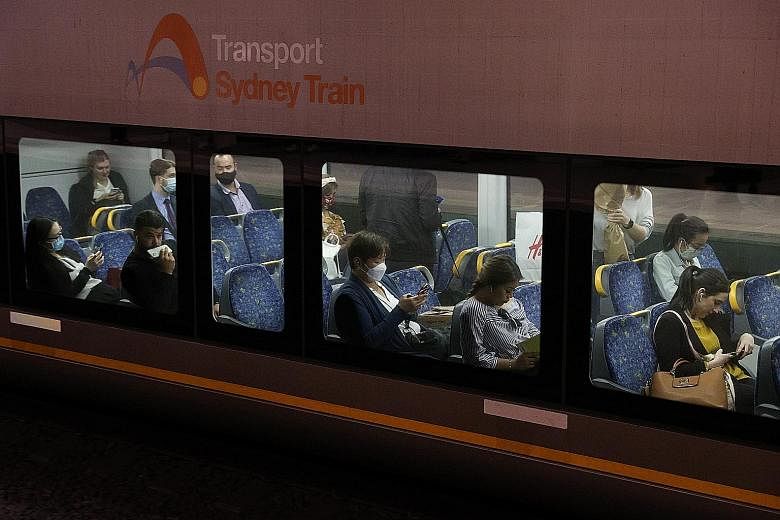Many Australians have been leaving major cities to live in regional areas since the Covid-19 pandemic, which has led them to realise they can work from home and do not need to endure exorbitant property prices and heavy congestion.
The exodus has left Sydney and Melbourne experiencing net losses of 14,000 people and 10,000 people, respectively, in the first half of the year. Most of the people who left went to regional and rural areas around the country.
The population shift marks a reversal of the standard trend in Australia, which has typically involved people moving to the cities from regional areas, where average wages are lower and where some areas have much higher unemployment. Almost 70 per cent of Australia's population of 25.6 million residents live in the eight capital cities. More than 40 per cent live in Sydney and Melbourne, the two largest cities.
The flight from urban areas has had a dramatic impact on the property market, causing price rises in regional areas as city prices fall. Since the pandemic hit Australia in March, property prices in cities have fallen by 2.3 per cent, while regional values rose by 1.7 per cent.
Property prices in some regional areas are booming. In the Southern Grampians, a picturesque region about 300km west of Melbourne in the state of Victoria, house prices rose 31 per cent in the year to Sept 30.
A property agent in the Southern Grampians, Mr John Lawson, said the demand for local properties was "absolutely crazy".
"I've never seen anything like this in 48 years in real estate," he told the Domain property website.
"We've had people from Melbourne, Queensland, other regional centres and even Western Australia buying houses and blocks of land sight unseen. They all just want to get out."
Some regional areas had already begun to grow before the pandemic, mainly due to people leaving the cities, where property prices have soared in recent years.
In the capital cities, the median property price is A$638,264 (S$625,256), against A$403,181 in regional areas, according to property analysts CoreLogic. The median prices in Sydney and Melbourne are A$860,955 and A$666,240, respectively.
Ms Jo Yates, who left Sydney in New South Wales for the town of Tewantin in Queensland state, had expected the move to be temporary, but is now planning to stay.
"Just coming up here, and having a bit of space, actually made me realise how on top of each other we were, how stressed everybody was, how unfriendly it can be," she told The Sun Herald. "For half the money I was paying in Bondi (in Sydney), I've got a four-bedroom house instead of a two-bedroom unit," the 41-year-old added.
But it is not yet clear whether the exodus will be permanent or whether Australians will return to their urban lives when the pandemic ends.
Urban planning expert Tony Matthews from Griffith University said Australia appeared to be entering a new era of "regionalism", in which residents would fan out from the capital cities to larger regional centres. The influx in regional areas would boost economic development and help local businesses, he said.
-
14,000
Sydney's net loss of people.
10,000
Melbourne's net loss of people.
"The move out of cities is on; we're not going backward from this," Dr Matthews told the news.com.au website.
"The big problem for regional cities was that they didn't have the jobs for professional workers. But the revolution in work from home has inadvertently solved that problem as your job can now move with you," he pointed out.
Melbourne experienced a serious second wave of the coronavirus but is emerging from its lockdown. The state of Victoria yesterday recorded its 16th consecutive day of no new cases and no deaths.
Australia has recorded a total of 27,711 cases and 907 deaths.
A demographer at the Australian National University, Dr Liz Allen, said the recent exodus had up-ended the trend of people moving into larger cities, but she did not think it would be a long-term change. "Once there is a solution to Covid-19, then people will start returning to the cities but whether they are the same people as those that left is another story," she told The Age newspaper.

